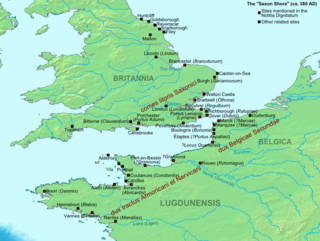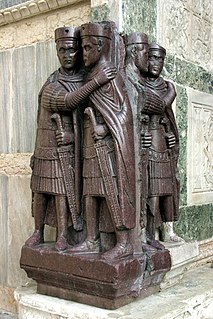| Dux Belgicae secundae | |
|---|---|
 The Saxon Shore (Litus saxonicum) around the year 380. | |
| Active | end of the fourth century to the fifth century |
| Country | Roman Empire |
| Type | commander of a stretch of the Rhine limes and Litus Saxonicum (Saxon Shore) |

The Dux Belgicae secundae ("commander of the second Belgic province") was a senior officer in the army of the Late Roman Empire who was the commander of the limitanei (frontier troops) and of a naval squadron on the so-called Saxon Shore in Gaul.
The limitanei or ripenses, meaning respectively "the soldiers in frontier districts" or "the soldiers on the riverbank", were an important part of the late Roman and early Byzantine army after the reorganizations of the late 3rd and early 4th centuries. The limitanei, unlike the comitatenses, palatini, and scolae, garrisoned fortifications along the borders of the Roman Empire and were not normally expected to fight far from their fortifications.

The Saxon Shore was a military command of the late Roman Empire, consisting of a series of fortifications on both sides of the English Channel. It was established in the late 3rd century and was led by the "Count of the Saxon Shore". In the late 4th century, his functions were limited to Britain, while the fortifications in Gaul were established as separate commands. Several Saxon Shore forts survive in east and south-east England.
Contents
- History
- Administrative staff
- Forts, officers, and units
- See also
- References
- Further reading
- External links
The office is thought to have been established around 395 AD. At the imperial court, a dux was of the highest class of viri spectabiles . The Notitia Dignitatum lists for the Gallic part of the Litus Saxonicum ("the Coast of Saxony") two commanders, and their military units, who were charged with securing the coasts of Flanders (Belgica II), of Normandy (Lugdunensis II), and of Brittany (Lugdunensis III), these commanders being the Dux Belgicae secundae [1] and the neighboring Dux Armoricani et Nervicani. [2]

The Notitia Dignitatum is a document of the late Roman Empire that details the administrative organization of the Eastern and Western Empires. It is unique as one of very few surviving documents of Roman government and describes several thousand offices from the imperial court to provincial governments, diplomatic missions, and army units. It is usually considered to be accurate for the Western Roman Empire in the AD 420s and for the Eastern or Byzantine Empire in the AD 390s. However, the text itself is not dated, and omissions complicate ascertaining its date from its content.
These two commanders were the successors to an official the Comes Maritimi Tractus (Commander of the Coastal Regions), who formerly commanded both the British and the Gallic part of the Saxon Shore. These two commanders maintained coastal defenses until the mid–5th Century. A well known commander was the Frankish king Childeric I (late 5th century).
"Comes", plural "comites", is the Latin word for "companion", either individually or as a member of a collective denominated a "comitatus", especially the suite of a magnate, being in some instances sufficiently large and/or formal to justify specific denomination, e. g. a "cohors amicorum". "Comes" derives from "com-" ("with") and "ire" ("go").

Childeric I was a Frankish leader in the northern part of imperial Roman Gaul and a member of the Merovingian dynasty, described as a King, both on his Roman-style seal ring, which was buried with him, and in fragmentary later records of his life. He was father of Clovis I, who acquired lordship over all or most Frankish kingdoms, and a significant part of Roman Gaul.














